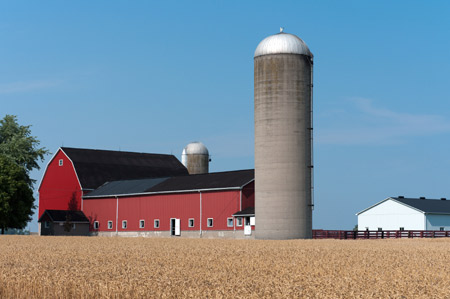Despite Railway Upgrades, Delays Still Loom
Category: Grains, Miscellaneous, Oilseeds
 (Agriculture.com) – Better but not yet good enough. That sums up grain transportation in the northern Plains. Shippers and farmers are worried that pressure will be felt nationwide by barge lines as well as railroads struggling to move record crops to export.
(Agriculture.com) – Better but not yet good enough. That sums up grain transportation in the northern Plains. Shippers and farmers are worried that pressure will be felt nationwide by barge lines as well as railroads struggling to move record crops to export.
Statistics that railroads give to the federal Surface Transportation Board (STB) show big gains, from a backlog last March of 16,000 grain cars in the BNSF Railway Company system and 8,000 in North Dakota alone. By summer, cars more than three days past due fell to 1,000 in North Dakota but crept back up to about 3,000 in October.
Through summer and fall, BNSF continued work to boost service. It now has 130 grain shuttles of 110 cars, a record, says John Miller, agricultural products group vice president for BNSF.
“From Fargo, North Dakota, and west is really going to feel like a different railroad,” Miller says.
That’s due to $5 billion in capital investments by BNSF this year, with nearly $1 billion of that in the North Dakota region. It includes 55 miles of new double track between Minot, North Dakota, and Glasgow, Montana. BNSF has installed nine new or expanded sidings in North Dakota and six in Montana, along with better signaling.
In farm fields, the improvement isn’t obvious. Southwest of Grand Forks, North Dakota, when Rick Ostlie started combining soybeans this fall, the corn basis at his local elevator was still 95¢ under futures, for a cash price of $2.29 a bushel.
“It’s costing me 50¢ to 60¢ a bushel on corn because of the oil boom,” says Ostlie. “I’m competing with the Bakken area for railcars. I can’t compete with oil when it comes to shipping.”
Without adequate pipelines for oil, shipping in tanker cars has ballooned.
In 2009, U.S. railroads carried 11,000 carloads of crude. By 2013, they shipped 400,000, says Mike Steenhoek, executive director of the Soy Transportation Coalition in Ankeny, Iowa.
Landlocked North Dakota depends on rail. Corn Belt states have more processing and river barge terminals, but Steenhoek says they’ll feel North Dakota’s pain. “Our system is so interconnected that if there’s an issue in one place, the ripple effects will be felt elsewhere,” he says. In states near North Dakota, “people are going to be willing to assume more trucking costs to get to the river. I think it’s going to increase demand for river services, as well.”
Barge rates are generally slower to rise, says Dan Mack, vice president of rail transportation and terminal operations for the cooperative, CHS, “but the market is starting to respond to that.”
“I don’t anticipate anything to the degree that we saw on rail, but there will be more demand for barges as we get into winter,” he adds.
As 2014 crops are marketed, “we probably are going to see more exports finding their way out of the Gulf Coast,” he says.
Oil is a big player but not the only one pressuring railroads. A recovering economy is boosting demand for intermodal trains that carry containers for trucks, Mack says. Demand for coal has bounced back. Even agriculture is adding pressure in the northern Plains region.
“If you look at the growth of corn and soybean production over 10 years, it’s pretty significant,” he says.




